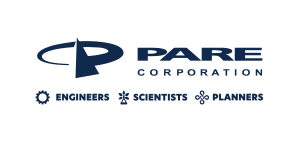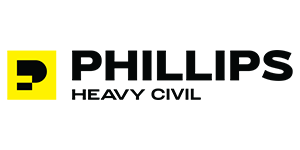Lake Drains
Contents
- Types of Drains and Primary Uses
- Operation, Maintenance, and Monitoring
- Dam Owner Academy Series
- Save this page as a printable Dam Owner's Fact Sheet
An operable lake drain accomplishes the following:
- Makes for a safer dam by providing a method to lower the lake level in an emergency situation.
- Allows the dam owner to have greater control of the lake level for maintenance, winter drawdown and emergency situations.
- Meets the requirements of state dam safety laws.
Lake drains are an important part of ensuring the safety of your dam.
Types of Drains
Common types of drains include the following:
- A valve located in the spillway riser.
- A conduit through the dam with a valve at either the upstream or downstream end of the conduit.
- A siphon system (often used to retrofit existing dams).
- A gate, valve, or stoplogs located in a drain control tower.
Uses of Drains
The following situations make up the primary uses of lake drains:
Emergencies: Should serious problems ever occur to threaten the immediate safety of the dam, drains may be used to lower the lake level to reduce the likelihood of dam failure. Examples of such emergencies are as follows: clogging of the spillway pipe which may lead to high lake levels and eventually dam overtopping, development of slides or cracks in the dam, severe seepage through the dam which may lead to a piping failure of the dam, and partial or total collapse of the spillway system.
Maintenance: Some repair items around the lake and dam can only be completed or are much easier to perform with a lower than normal lake level. Some examples are: slope protection repair, spillway repairs, repair and/or installation of docks and other structures along the shoreline, and dredging the lake.
Winter Drawdown: Some dam owners prefer to lower the lake level during the winter months to reduce ice damage to structures along the shoreline and to provide additional flood storage for upcoming spring rains. Several repair items are often performed during this winter drawdown period. Periodic fluctuations in the lake level also discourage muskrat and beaver habitation along the shoreline. Muskrat burrows in earthen dams can lead to costly repairs.
Common Maintenance Problems
Common problems often associated with the maintenance and operation of lake drains include the following:
- Deteriorated and bent control stems and stem guides.
- Deteriorated and separated conduit joints.
- Leaky and rusted control valves and sluice gates.
- Deteriorated control towers.
- Deteriorated ladders in control towers.
- Clogging of the drain conduit inlet with sediment and debris.
- Inaccessibility of the control mechanism to operate the drain.
- Seepage along the drain conduit.
- Erosion and undermining of the conduit discharge area because the conduit outlets significantly above the elevation of the streambed.
- Vandalism.
- Development of slides along the upstream slope of the dam and the shoreline caused by lowering the lake level too quickly.
Operation and Maintenance Tips
All gates, valves, stems and other mechanisms should be lubricated according to the manufacturer’s specifications. If you do not have a copy of the specifications and the manufacturing company cannot be determined, then a local valve distributor may be able to provide assistance.
The lake drain should be operated at least twice a year to prevent the inlet from clogging with sediment and debris and to keep all movable parts working easily. Most manufacturers recommend that gates and valves be operated at least four times per year. Frequent operation will help to ensure that the drain will be operable when it is needed. All valves and gates should be fully opened and closed at least twice to help flush out debris and to obtain a proper seal. If the gate gets stuck in a partially opened position, gradually work the gate in each direction until it becomes fully operational. Do not apply excessive torque as this could bend or break the control stem, or damage the valve or gate seat. With the drain fully open, inspect the outlet area for flow amounts, leaks, erosion and anything unusual.
All visible portions of the lake drain system should be inspected at least annually, preferably during the periodic operation of the drain. Look for and make note of any cracks, rusted and deteriorated parts, leaks, bent control stems, separated conduit joints, or unusual observations.
A properly designed lake drain should include a headwall near the outlet of the drain conduit to prevent undermining of the conduit during periods of flow. A headwall can be easily retro-fitted to an existing conduit if undermining is a problem at an existing dam. A properly designed layer of rock riprap or other slope protection will help reduce erosion in the lake drain outlet area.
Drain control valves and gates should always be placed upstream of the centerline of the dam. This allows the drain conduit to remain depressurized except during use, therefore reducing the likelihood of seepage through the conduit joints and saturation of the surrounding earth fill.
For accessibility ease, the drain control platform should be located on shore or be provided with a bridge or other structure. This becomes very important during emergency situations if high pool levels exist.
Vandalism can be a problem at any dam. If a lake drain is operated by a crank, wheel or other similar mechanism, locking with a chain or other device or off-site storage may be beneficial. Fences or other such installations may also help to ward off vandals.
The recommended rate of lake drawdown is one foot or less per week, except in emergencies. Fast drawdown causes a build-up of hydrostatic pressures in the upstream slope of the dam which can lead to slope failure. Lowering the water level slowly allows these pressures to dissipate.
Monitoring
Monitoring of the lake drain system is necessary to detect problems and should be performed at least twice a year or more frequently if problems develop. Proper ventilation and confined space precautions must be considered when entering a lake drain vault or outlet pipe. Items to be considered when monitoring a lake drain system include the stem, valve, outlet pipe and related appurtenances. Monitoring for surface deterioration (rust), ease of operation, and leakage is important to maintain a working lake drain system. If the stem or valve appears to be inoperable because of deterioration or if the operability of the lake drain system is in question, because the valve does not completely close (seal) and allows an excessive amount of leakage, then a registered professional engineer or manufacturer’s representative should be contacted. Photographs along with written records of the monitoring items performed provide invaluable information.
Dam Owner Academy: Spillways & Outlet Works
The Dam Owner Academy is a series of videos to educate and inform owners on all aspects of operating and maintaining a dam safely. The videos concisely present the critical basics of owner responsibilities and are available as a free resource for owners and those conducting owner outreach programs.
Lake drains are discussed in the "Spillways & Outlet Works" video.


































